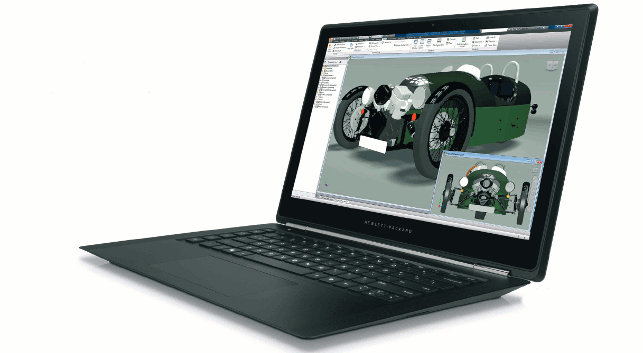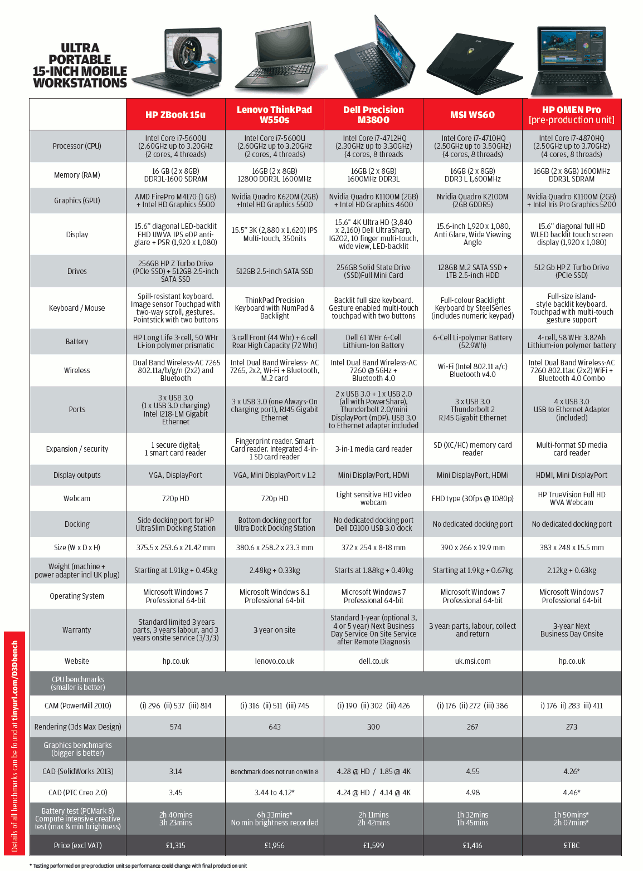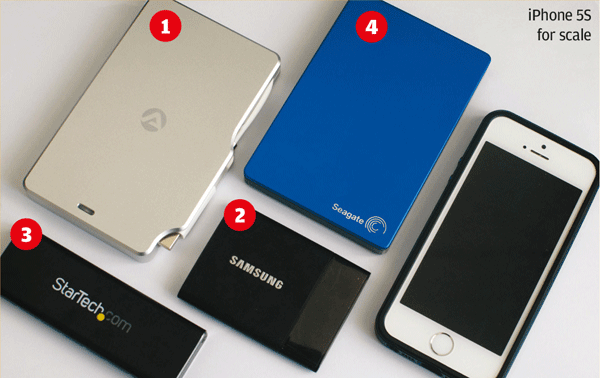
The sleek HP Omen Pro
The first mobile workstations were 5kg beasts, almost guaranteed to put your back out on work trips.
Weights have now come down, but most 15-inch machines still come in at a hefty 3kg. Bruised shoulders from laptop bags are no longer guaranteed, but you’ll likely feel the strain at the end of the day.
Until recently, attempts at ultra mobile workstations have meant serious trade-offs in both performance and screen size. And when your job relies on detailed engineering design, running CAD on a 14-inch laptop simply won’t cut it for some.
Everything changed in 2013 when Dell unveiled the Precision M3800, the first proper ultra portable mobile workstation with a 15.6-inch screen. At 1.88kg in weight and 8mm at its most slender, this MacBook Pro look-alike certainly turned some heads.
Since then HP, Lenovo and MSI have all followed suit, delivering 15-inch machines that are certified and optimised to run 3D CAD but also offer the same mobility as a slimline business laptop. Compared to a standard 15-inch mobile workstation, there are some compromises.
On the whole, performance is lower. There’s a maximum 16GB of RAM (instead of 32GB). There is only room for one or two drives (instead or two or three) and you can forget about having a DVD drive.
But they are considerably lighter. Most come in under 2kg and when power adapters are included the savings can be as much as 1.5kg.
There is no standard template for these next gen mobile workstations. Manufacturers blend portability and performance in different ways.
Broadly speaking there are two types of machines.
1) Those based on a business-class laptop chassis, so include enterprise features like fingerprint scanner and docking port. Some models are classified as Ultrabooks. With low voltage Dual Core CPUs and low power professional GPUs they prioritise battery life over performance. They are more suited to entry-level CAD than rendering or simulation. They include the HP ZBook 15u and Lenovo ThinkPad W550s.
2) Those based on a 3D gaming laptop chassis where performance is an absolute priority but battery life is more limited and fans are noisier under load. They feature Quad Core CPUs that deliver in CAD as well as rendering, simulation and CAM. Professional GPUs sit between entry-level and mid-range. They include the Dell Precision M3800, MSI WS60 and HP OMEN Pro.
To assess performance we used our standard suite of application-specific workstation benchmarks.
To test battery life, we used PCMark 8’s Creative test (OpenCL) which uses CPUs and GPUs for tasks including video editing, media transcoding and gaming.

To enlarge image click here
It’s not CAD but should give a fairly good indication of what to expect under a heavy compute load — though it is important to note that the test uses built in Intel graphics, rather than the discrete Quadro or FirePro GPUs which draw more power, so it’s not perfect.
All machines were set to high performance. Display brightness was set at lowest and highest levels and both scores recorded.
Of course, don’t take the battery figures as gospel. If you only use your machine for Word or Excel then the battery will last a whole lot longer.
External Storage

Mainstream 15-inch mobile workstations can typically hold up to three internal drives but their slimline siblings are limited to one or two. This increases the importance of external storage for storing huge CAD datasets.
To read our review of some of the most popular storage devices, click here.






